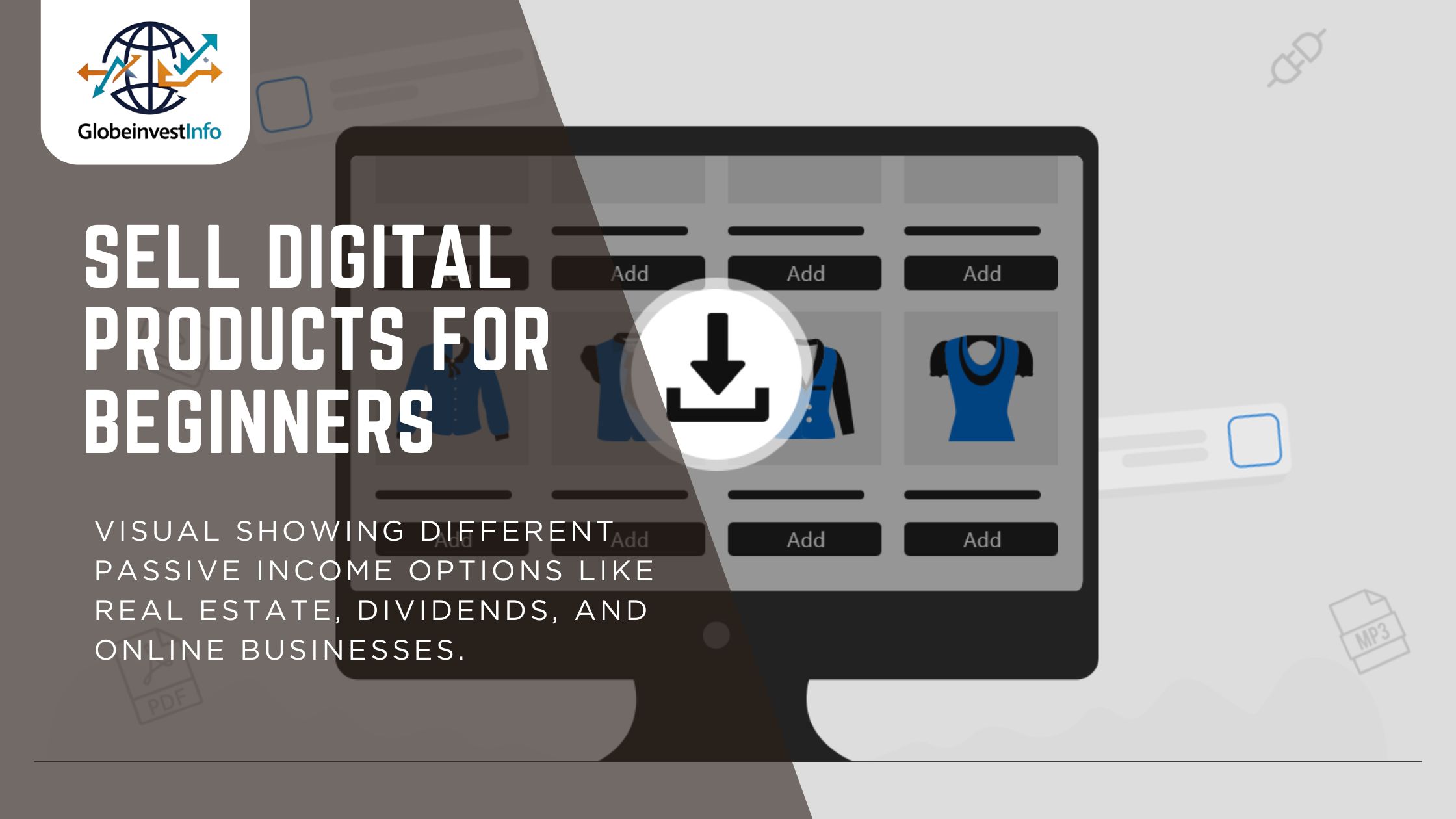You can create once and keep getting paid. That’s the promise of passive income from digital downloads, templates, courses, and more. In this friendly walkthrough, you’ll go from idea to first sale—without fancy jargon. if you want even more ways to grow passive income, we’ve got you covered there too.
Quick Read
- Start with a specific problem and a simple product (one template, one mini-course, one preset pack).
- Pick a sales channel you can launch this week (marketplace or your own checkout).
- Write a clear product page: outcome, what’s inside, use rights, and simple FAQ.
- Collect payments, deliver files automatically, and build an email list from day one.
- Track a few numbers only: traffic, conversion rate, and refund rate.
- Improve the product with buyer feedback—then add a second related item.
What is Passive Income?
Passive income is money that keeps coming in with light upkeep after the initial build. Digital products fit well because they have no inventory, no shipping, and instant delivery. You’ll still do work—creating, updating, and answering questions—but sales can continue while you focus on new products.
Key Steps for Selling Digital Products (Beginner Friendly)
Step 1: Validate a simple idea
- Pick a tight niche. “Resume templates for new grads,” “Notion planner for busy nurses,” or “Lightroom presets for indoor food shots.”
- Check demand. Look at marketplace categories, search suggestions, and social comments. Save 10–20 real phrases your audience uses.
- Decide the format. Templates, checklists, swipe files, mini-courses, audio packs, printables, icon sets—start with one.
Step 2: Build a minimum lovable product
- Outline first. Promise a single clear outcome and list exactly what’s inside.
- Keep production fast. Use familiar tools (Canva, Google Docs, Notion, PowerPoint, Audacity).
- Add use rights. Say what buyers can and can’t do (personal use, commercial use, or license terms). Keep it short and plain English.
Step 3: Choose where to sell
- Marketplace (fastest): Set up in hours, built-in traffic, less control.
- Your own checkout: Full control, own your list, flexible pricing and bundles.
- Hybrid: Sell your hero product on a marketplace, then offer bundles and higher-tier items on your own site.
Channel comparison (quick view)
| Channel Type | Best For | You Control | Trade-offs |
|---|---|---|---|
| Marketplace (e.g., creative or craft platforms) | First sales fast | Listing page, price within rules | Fees, competition, fewer brand touches |
| Your store (e.g., site + checkout app) | Long-term asset | Branding, pricing, bundles, upsells | You drive traffic, handle setup |
| Course platform | Video lessons and communities | Curriculum, pricing tiers | Monthly fees, feature limits |
| Paylink/checkout page | Solo products and presales | Speed, simple delivery | Fewer storefront features |
Step 4: Price and package
- Anchor to an outcome, not file count. If your template saves two hours per week, price so the value is obvious.
- Create 2–3 tiers. Basic, Plus (with bonuses), and Pro (with license or extra support).
- Use simple price testing. Start with a round number, note conversion for a week, adjust by small steps.
Step 5: Write a product page that converts
- Headline: State the outcome (who it’s for + what it helps them do).
- What’s inside: Bulleted list of files, formats, and sizes.
- How it works: “Buy → instant download link → lifetime updates.”
- Use rights: One line on personal vs. commercial use with a link to your license text.
- Proof: 2–3 short testimonials or before/after screenshots once you have buyers.
- FAQ: Answer refund policy, software needed, and support response time.
Step 6: Deliver files and collect emails
- Automatic delivery. Use the platform’s download delivery or your checkout’s fulfillment.
- Email list. Offer a helpful freebie (lite version or checklist) to build your list.
- Update path. When you improve the product, email buyers and upload the new file.
Step 7: Launch lightly, then iterate
- Soft launch: Share with a small audience for honest feedback.
- Public launch: Add 1–3 launch posts, a short email series, and a limited early-bird bonus.
- Improve: Watch questions that repeat, update the product, and clarify the page.
Smart Strategies
Diversifying Income Streams
- Bundles: Combine related items (template + tutorial + checklist).
- Licenses: Offer personal and commercial tiers.
- Cross-sell: After purchase, suggest a related mini-product at a lower price.
- Repurpose: Turn your template into a course module or a workshop replay.
Managing Risk
- Scope creep: Keep v1 small. Add features only buyers ask for.
- Refunds and support: Set a simple refund window and a clear support email.
- Backups and access: Store originals in the cloud and keep a changes log.
- Brand safety: Avoid using third-party content you don’t have rights to.
Tax Considerations
- Keep records. Save invoices and payouts.
- Sales tax/indirect tax may apply. Marketplaces may handle it for you; your own store might need settings by region.
- When unsure, ask a pro. Laws change, and your setup (state, country, product type) matters.
Practical Tables & Checklists
Simple launch checklist
- Research phrases your buyers use
- Draft the promise and outline
- Create v1 product and license note
- Write product page + screenshots
- Set up checkout + delivery
- Test purchase and file access
- Publish, email list, launch posts
- Collect feedback and improve
Cost planning (example ranges)
| Item | Frugal Route | Upgraded Route |
|---|---|---|
| Design tool | Free plan | Paid plan |
| Checkout/app | Free tier | Monthly plan |
| Theme/assets | Free | Premium |
| Promotion | Organic | Small ad test |
| Total monthly | $0–$20 | $30–$100+ |
(Numbers are illustrative; use your actual tools and fees.)
Pros & Cons of Digital Products
| Pros | Cons |
|---|---|
| No inventory or shipping | You must drive consistent traffic |
| High margins after creation | Support and updates still take time |
| Global reach, instant delivery | Platforms and rules can change |
| Easy to test and iterate | Copycats exist—use clear licensing |
FAQs
Q1: Do I need a business entity to start?
You can start as a sole proprietor in many places, then switch later if it makes sense. Check local rules and consider liability and taxes before you choose.
Q2: What file types are easiest for beginners?
Start with what you know: PDF checklists, Canva templates, spreadsheets, or short screen-recorded lessons. Keep setup simple so you can ship.
Q3: How do I handle licensing?
Add a short line on your product page and a license text file inside the download. Tell buyers if the item is for personal use only or includes commercial rights.
Q4: What should I track each week?
Traffic, conversion rate (sales ÷ visits), refund rate, and email list growth. These four numbers show where to focus next.
Q5: Can I sell AI-assisted products?
Yes, if the content is useful and you have rights to every part. Be clear about use rights and avoid including third-party assets you cannot license.
Conclusion
Selling digital products is one of the cleanest paths to ongoing passive income once you’ve built a simple, useful asset and a repeatable launch routine. Start small, ship fast, and improve with real buyer feedback. For weekly money and growth ideas, subscribe to our Simple Investing Tips—and when your first product goes live, share the link with us.
Kelsey Johnson is a seasoned business writer specializing in strategy, marketing, and entrepreneurship. Her concise, insightful blogs help professionals drive growth and make smarter business decisions.

